This article was medically reviewed by Lacy Windham, MD. Lacy Windham, MD, is a Board-Certified Obstetrician & Gynecologist in Cleveland, Tennessee. Dr. Windham attended medical school at the University of Tennessee Health Science Center in Memphis. Her residency was completed at Eastern Virginia Medical School in Norfolk, Virginia. She was the recipient of multiple awards during her residency training, including Most Outstanding Resident in Maternal Fetal Medicine, Most Outstanding Resident in Oncology, Most Outstanding Resident Overall, and Special Award in Minimally Invasive Surgery.
There are 15 references cited in this article, which can be found at the bottom of the page.
This article has been viewed 357,727 times.
Experts agree that Candida, which is a type of fungus, naturally lives on your skin and in your body and often doesn't cause any problems. However, an overgrowth of Candida may cause a fungal infection called candidiasis.[1] Research suggests that candidiasis can affect multiple areas of your body, but the two most common types of infection include genital yeast infections and oral thrush.[2] Fortunately, candidiasis is easily treatable, so you can find relief.
Steps
Treating Vaginal Yeast Infections
-
1See your doctor. If you do not have a yeast infection but take over-the-counter (OTC) medications for one, then you can cause resistant candida to breed, making you more prone to infection later on. It is best to see your doctor first and allow her to perform a physical examination to determine if the infection is candida or something else.
- Your doctor will likely begin with a vulvovaginal inspection to examine the area for a whitish discharge and redness around the area (erythema).[3]
- While a man can technically get a genital yeast infection, they’re extremely rare. You should still begin by seeing your doctor to determine the cause of any genital abnormalities.
-
2Submit to any diagnostic testing. After the physical exam, your doctor may want to run a specific diagnostic test to confirm the diagnosis. Common diagnostic tests include slides, cultures, and pH tests.[4]
- If your doctor prepares a slide, then she’ll look for particular structures of yeast formation under a microscope.
- A culture of the discharge will isolate it and determine the cause via lab work.
- A pH test determines if the normal vaginal pH of four has been altered since candida usually results in a lower pH.
Advertisement -
3Take an OTC medication to clear the infection. OTC medication is available to clear up the infection. These anti-fungal creams, ointments, or tablets usually require between one- and three-day regimens to clear the infection. Always follow the specific manufacturer’s instructions for the medication. Common options include:[5]
- Butoconazole (Gynazole-1)
- Clotrimazole (Gyne-Lotrimin)
- Miconazole (Monistat 3)
- Terconazole (Terazol 3)
- Common side effects include minor burning or irritation.
-
4Ask your doctor about prescription medications. Your doctor will likely recommend an OTC option, but she may also prescribe you a medication, especially in complicated or recurrent cases.[6] The oral anti-fungal medication fluconazole (Diflucan) is a common prescription options.
- Your doctor may also prescribe this in combination with a seven- to fourteen-day regimen of applying vaginal ointments or creams.
-
5Change your underwear frequently. Underwear provide a breeding ground for candida infections. During the course of the infection, stick to cotton underwear, which breathe more than other materials. You should also change your underwear every twenty-four hours or even more often if possible.[7]
- Note that normal laundering in hot water has not always proven effective at sterilizing underwear with candida present in the fabric. Studies have shown that laundering the underwear and then microwaving the moist material for five minutes on high reduced the risk of prolonging or reintroducing the infection.[8] Ensure that the material is microwave safe before trying. Laundering and then ironing the material is another option.
-
6Refrain from sex. Lubes, condoms, and even your partner's natural bacteria can make your infection worse or cause it to begin with. Refrain from sex, including oral sex, until you have cleared your infection.[9]
-
7Finish a course of antibiotics. Many women develop a yeast infection due to taking antibiotics for a completely unrelated problem. By reducing the occurrence of naturally present bacteria, the antibiotics allow the candida to thrive.[10] It is important to finish the course of antibiotics despite causing a test infection. Often the resurgence of the natural bacteria after finishing the antibiotics is all it takes to clear the yeast infection.
-
8Evaluate other medications. In addition to antibiotics, certain other medications and conditions can cause or prolong yeast infections. High doses of estrogen from birth control pills or hormone therapy can lead to increases in yeast infections, for instance.[11] Consult with your doctor about the best course or action for changing a medication that may be responsible for a yeast infection.
-
9Ask your doctor about a medication routine. For chronic or recurrent cases of genital candida infection, your doctor may prescribe a medication routine as opposed to a single course. This option may include taking a medication once a week for up to six months rather than over the course of only several days.[12]
Treating Thrush
-
1See your doctor. Thrush is a candida infection of the mouth or throat. It’s most common in children, but it can also occur in adults, especially those with otherwise compromised immune systems. Your doctor will begin by performing a physical examination of your mouth and throat. She’ll look for raised white patches of film with red inflammation beneath. She may also look down your throat for similar white lesions.[13]
- Ensure that you see the baby’s pediatrician for cases of thrush in infants. These cases often get better on their own, and the pediatrician may choose to monitor rather than immediately treat the infection.
- It is quite common for infants to get thrush from breastfeeding, and it can appear on the mother's breast as well. This is because the infant often comes into contact with candida when passing through the birth canal (through the vagina).
- If your breastfeeding baby has thrush, your doctor will likely treat it with Nystatin mouthwash in small amounts for your baby, as well as an anti fungal cream for your breasts to prevent the infection from being passed back and forth between the two of you. Diflucan is commonly prescribed to mothers when the baby has thrush.
-
2Submit to diagnostic testing. Your physician will want to confirm thrush as the diagnosis. He or she will ask you to submit to diagnostic testing depending on the severity of your case. Most cases are straightforward, and your doctor will scrape one of your sores in your mouth to look at the sample under a microscope.
- For more severe cases where the candida may have spread to your esophagus, you doctor will likely take a throat culture sample to have a lab determine exactly what germs are present.[14]
-
3Eat yogurt. If your doctor determines that you have a very mild case of thrush (especially due to taking a recent antibiotic), then he or she may simply recommend that you eat yogurt with active cultures.[15] This will help restore the balance of naturally occurring bacteria in your mouth and throat, making the environment less inhabitable by candida fungi.
-
4Take acidophilus pills. Acidophilus is one of the active cultures you’ll find in yogurt, but it’s also available in pill form. You can find these pills available without a prescription, and they’ll also help restore the natural equilibrium of germs in your mouth and throat.[16]
-
5Use prescription treatments. If your doctor determines that your case requires a prescription-strength treatment, then he or she may write you a prescription for one of several options. These anti-fungal medications come in a variety of forms, including:[17]
- Anti-fungal mouthwashes such as Nystatin
- Anti-fungal mouth lozenges (clotrimazole)
- Pills or syrups, including fluconazole (Diflucan) or itraconazole (Sporanox)
- If your child’s pediatrician decides that the case of thrush requires a prescription drug, then he or she will write a prescription for one of the options proven safe in infants, such as fluconazole (Diflucan) or micafungin (Mycamine).[18]
-
6Sterilize items in contact with your mouth. To prevent the possibility of reinfecting yourself with the fungus once it’s cleared up, you should change your toothbrush. For infants, ensure that you sterilize any teething toys and all items used in feeding such as the nipples from bottles.[19]
Warnings
- Pregnant women should speak with their obstetricians before undergoing any type of candida treatment.⧼thumbs_response⧽
- Ensure you see your doctor if you believe you have a candida infection since the infection can spread to other parts of the body in those with weakened immune systems.[23]⧼thumbs_response⧽
References
- ↑ https://www.health.harvard.edu/a_to_z/candidiasis-a-to-z
- ↑ https://www.cdc.gov/fungal/diseases/candidiasis/index.html
- ↑ Domino, F. (n.d.). The 5-minute clinical consult standard 2015 (23rd ed.).
- ↑ Domino, F. (n.d.). The 5-minute clinical consult standard 2015 (23rd ed.).
- ↑ https://www.drugs.com/health-guide/candidiasis.html
- ↑ https://www.cdc.gov/fungal/diseases/candidiasis/genital/index.html#three
- ↑ https://www.uhs.uga.edu/sexualhealth/women/vaginitis.html
- ↑ http://www.ncbi.nlm.nih.gov/pubmed/3290474
- ↑ https://www.medicalnewstoday.com/articles/317935#Prevention
- ↑ https://www.medicalnewstoday.com/articles/317935
- ↑ https://www.medicalnewstoday.com/articles/317935
- ↑ https://www.drugs.com/health-guide/candidiasis.html
- ↑ Domino, F. (n.d.). The 5-minute clinical consult standard 2015 (23rd ed.).
- ↑ https://www.cdc.gov/fungal/diseases/candidiasis/thrush/
- ↑ https://www.medicalnewstoday.com/articles/317935#home-remedies
- ↑ https://www.nlm.nih.gov/medlineplus/ency/article/000626.htm
- ↑ https://www.drugs.com/condition/oral-thrush.html
- ↑ http://emedicine.medscape.com/article/962300-treatment
- ↑ https://patient.info/childrens-health/oral-thrush-in-babies
- ↑ https://www.nlm.nih.gov/medlineplus/ency/article/000626.htm
- ↑ https://www.nlm.nih.gov/medlineplus/ency/article/000626.htm
- ↑ https://www.nlm.nih.gov/medlineplus/ency/article/000626.htm
- ↑ https://www.nlm.nih.gov/medlineplus/ency/article/000626.htm
About This Article
Before you treat a vaginal yeast infection, see your doctor so they can diagnose it and recommend treatment. Your doctor will inspect the vulva and may run a lab test to determine the source of your symptoms. For a confirmed yeast infection, you can buy an over-the-counter 1- or 3- day anti-fungal cream treatment at your local pharmacy. If the infection has complications or is recurring regularly, your doctor might suggest a prescription medication or a longer regimen. During the course of the infection, stick to wearing cotton underwear, which will breathe more than other materials, and change your underwear at least once per day. You should also avoid sex for the time being, as this can make your infection worse. For more tips from our Medical co-author, like how to treat oral yeast infections, keep reading!

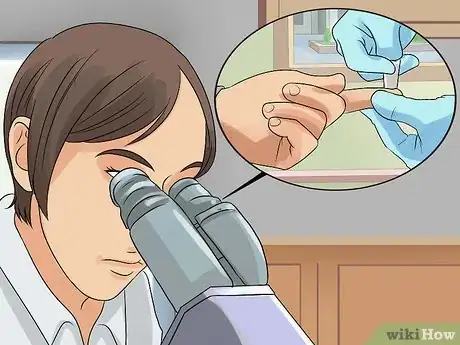
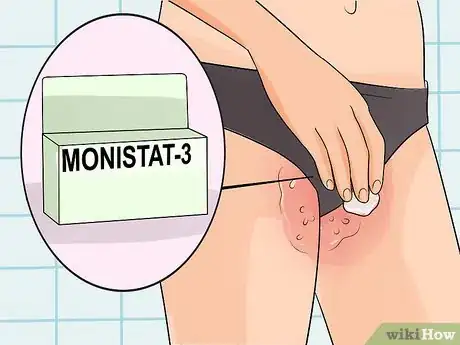


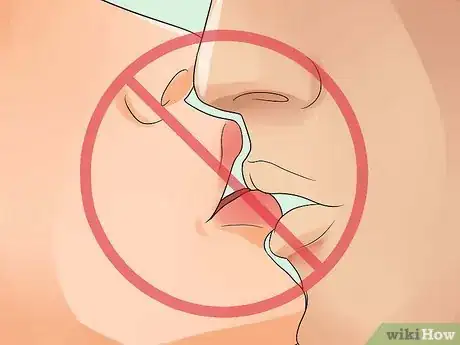
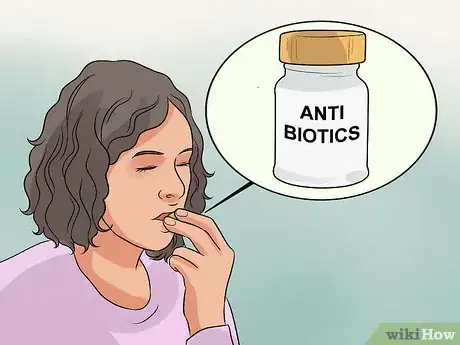
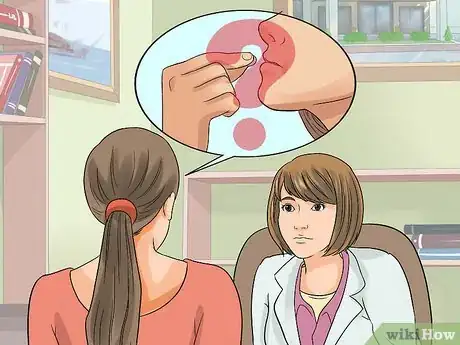
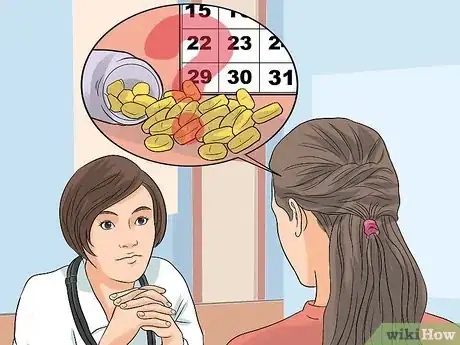
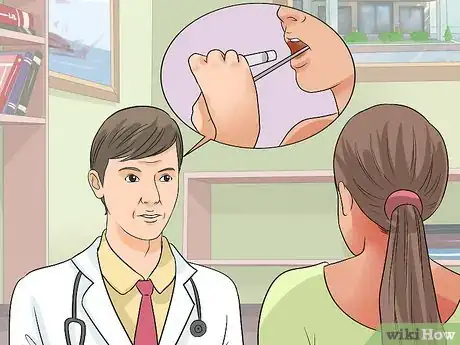


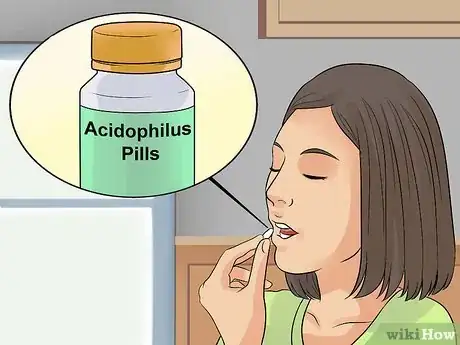

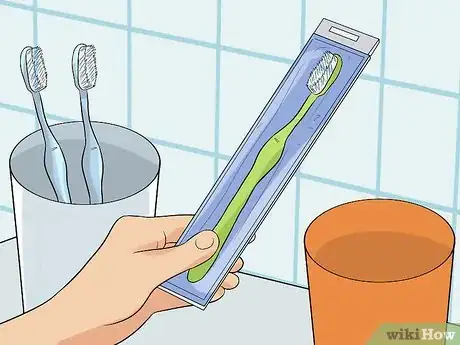




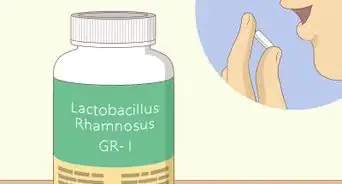




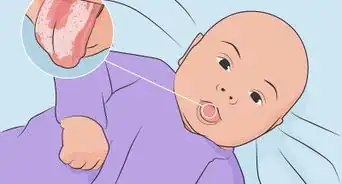


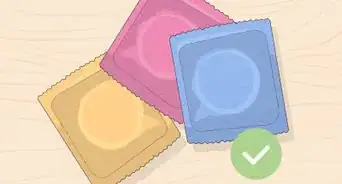













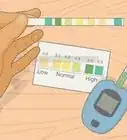



































Medical Disclaimer
The content of this article is not intended to be a substitute for professional medical advice, examination, diagnosis, or treatment. You should always contact your doctor or other qualified healthcare professional before starting, changing, or stopping any kind of health treatment.
Read More...